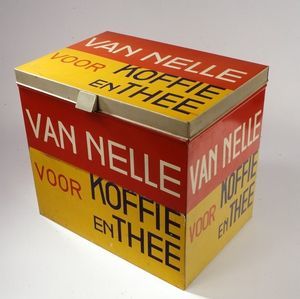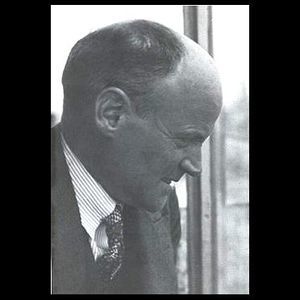Difference between revisions of "User:Ilja.sofia"
Ilja.sofia (talk | contribs) |
Ilja.sofia (talk | contribs) |
||
| Line 1: | Line 1: | ||
| − | = | + | =Ilja Sofia= |
*Ilja Sofia van Vlaardingen | *Ilja Sofia van Vlaardingen | ||
| Line 6: | Line 6: | ||
| − | = | + | =Fantastic Forgeries= |
| − | [[File:Boijmans van nelle.jpg| | + | [[File:Boijmans van nelle.jpg|thumb|Jac. Jongert, Storage tin for 'Van Nelle coffee and tea', 1930. Museum Boijmans Van Beuningen, Rotterdam]] |
| + | |||
| + | [[File:Boijmans van nelle.jpg|Jac. Jongert, Storage tin for 'Van Nelle coffee and tea', 1930. Museum Boijmans Van Beuningen, Rotterdam]] | ||
[[File:PHOTOS.jpg|550px]] | [[File:PHOTOS.jpg|550px]] | ||
| − | Jacob Jongert 1883 — 1942 | + | ==Research== |
| + | |||
| + | |||
| + | ====The artist==== | ||
| + | |||
| + | [[File:Jacobjongert.jpg|thumb|Jacob Jongert]] | ||
| + | |||
| + | Jacob Jongert 1883 — 1942 was a Dutch graphic designer, illustrator and art teacher. He studied at the arts academy in Amsterdam and got his teaching degree in 1905. In the same period he assisted the artist Roland Holst with his monumental murals. He thought this to be the direction in arts that suited him best but he never really managed to master the exact right technique. He found a new inspiration in S.H. de Roos, a book designer and typographer who brought the Arts & Crafts ideas of William Morris[http://en.wikipedia.org/wiki/International_Typographic_Style] to the Netherlands. After experimenting with several printing techniques he discovered graphic design as his ideal art form. Nothing is more effective in reaching a large audience than the mass production of posters and packages. Jongert was also a very active member of the social democratic party which you could see in his work. Graphic design was a logical choice, as it has the largest distribution. Although in 1911 Roland Horst advised him to leave politics behind and concentrate on his profession. | ||
| + | In the early 20s Kees van der Leeuwen hired Jongert to design products for Van Nelle such as packaging for coffee, tea and cigarettes. His work is characterised by a certain simplicity; the colours powerful, the shapes angular, yet his ornamental background notable. He was inspired by the modern German design he saw on the Werkbundtentoonstellung in Koln. He is seen as one of the pioneers in graphic design as he was the first artist to be hired to design products for commercial purposes. | ||
| + | |||
| + | |||
| + | ====The era==== | ||
| + | |||
| + | Post WWI | ||
| + | <br>Bauhaus | ||
| + | <br>Constructivism | ||
| + | <br>De Stijl | ||
| + | |||
| + | |||
| + | ====The object==== | ||
| + | |||
| + | *Coffee tin | ||
| + | *1930 | ||
| + | *37cm x 41,5cm x 28cm | ||
| + | *Red, yellow, white, blue | ||
| + | *Silk-screened | ||
| + | *Bought in 1986 by Boijmans | ||
| + | *Primary colours | ||
| + | *Asymmetric composition | ||
| + | *Modern | ||
| + | *Sans-serif typeface | ||
| + | |||
| + | |||
| + | ====Typography==== | ||
| + | |||
| + | Sans serif type, designed by Jacob Jongert, only for Van Nelle | ||
| + | |||
| + | |||
| + | ====Out-of-context mapping class==== | ||
| + | |||
| + | '''Why interesting''' | ||
| + | # Impact first World War, De Stijl, Bauhaus, Constructivism | ||
| + | # Beginning advertising, first artist to design products for commercial purposes | ||
| + | # It's already a reproduction | ||
| + | # It's loved because of its imperfections (worn out) | ||
| + | |||
| + | '''Technique''' | ||
| + | *Injection moulding | ||
| + | *Bending | ||
| + | *Folding | ||
| + | *Glass | ||
| + | *Laser cutting | ||
| + | *Make out of one piece | ||
| + | *Ceramics | ||
| + | *3d Printing | ||
| + | |||
| + | '''Context''' | ||
| + | *Grandma's time capsule with cookies, knit works, cat hook(?) and a revolver. | ||
| + | *Trading/slavery, transport, economy, unesco | ||
| + | |||
| + | '''Compagnon''' | ||
| + | *A save | ||
| + | *Cigarettes | ||
Revision as of 20:51, 15 September 2014
Contents
Ilja Sofia
- Ilja Sofia van Vlaardingen
- Rotterdam
- portfolio
Fantastic Forgeries
Research
The artist
Jacob Jongert 1883 — 1942 was a Dutch graphic designer, illustrator and art teacher. He studied at the arts academy in Amsterdam and got his teaching degree in 1905. In the same period he assisted the artist Roland Holst with his monumental murals. He thought this to be the direction in arts that suited him best but he never really managed to master the exact right technique. He found a new inspiration in S.H. de Roos, a book designer and typographer who brought the Arts & Crafts ideas of William Morris[1] to the Netherlands. After experimenting with several printing techniques he discovered graphic design as his ideal art form. Nothing is more effective in reaching a large audience than the mass production of posters and packages. Jongert was also a very active member of the social democratic party which you could see in his work. Graphic design was a logical choice, as it has the largest distribution. Although in 1911 Roland Horst advised him to leave politics behind and concentrate on his profession. In the early 20s Kees van der Leeuwen hired Jongert to design products for Van Nelle such as packaging for coffee, tea and cigarettes. His work is characterised by a certain simplicity; the colours powerful, the shapes angular, yet his ornamental background notable. He was inspired by the modern German design he saw on the Werkbundtentoonstellung in Koln. He is seen as one of the pioneers in graphic design as he was the first artist to be hired to design products for commercial purposes.
The era
Post WWI
Bauhaus
Constructivism
De Stijl
The object
- Coffee tin
- 1930
- 37cm x 41,5cm x 28cm
- Red, yellow, white, blue
- Silk-screened
- Bought in 1986 by Boijmans
- Primary colours
- Asymmetric composition
- Modern
- Sans-serif typeface
Typography
Sans serif type, designed by Jacob Jongert, only for Van Nelle
Out-of-context mapping class
Why interesting
- Impact first World War, De Stijl, Bauhaus, Constructivism
- Beginning advertising, first artist to design products for commercial purposes
- It's already a reproduction
- It's loved because of its imperfections (worn out)
Technique
- Injection moulding
- Bending
- Folding
- Glass
- Laser cutting
- Make out of one piece
- Ceramics
- 3d Printing
Context
- Grandma's time capsule with cookies, knit works, cat hook(?) and a revolver.
- Trading/slavery, transport, economy, unesco
Compagnon
- A save
- Cigarettes



